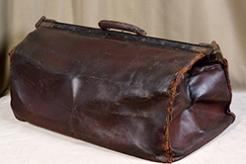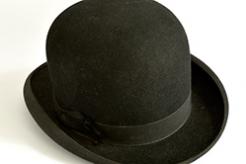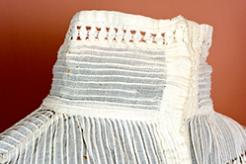




Author: Edīte Parute, Mag. art.
Aesthetics and Fashion Ideals of the Epoch
In Latvia, typical images of Art Nouveau fashion are best revealed in the paintings by Johann Walter and Janis Rozentāls. Late 19th – early 20th century Latvian painting in general features a romantic approach, commonly known as Neo-Romanticism that extolled the unity between man and nature, coinciding with the Art Nouveau fashion ideals. Turn of the century tendencies towards abstraction brought generalisation and stylisation of forms in a decorative manner fostered also by the influence of Art Nouveau. Decorativeness was especially enhanced by emphasised patterns, as flowing, supple Art Nouveau lines and wavy rhythms predominated in brushstrokes, forms, contours and silhouettes. Just like in the Art Nouveau fashion images, the juxtapositions of pale, cool, similar colours, cultivated nuances, ornament and vertical proportions were aestheticized in painting.[1] Turn of the century painting clearly demonstrated typical Art Nouveau feminine images whose garment silhouettes, decoratively stylised lines and wavy rhythms reflected the fashion aesthetics of the time.
“Fashion icons” of the epoch captured in photographic portraits – women writers, artists, actresses and high society ladies (Aspazija, Dace Akmentiņa, Elli Forssell-Rozentāle, Hermīne Freimane, etc.) – enriched Europe’s general scene with Riga’s peculiar and unique image. It manifested the essence of Nordic Art Nouveau with a reserved but refined approach to the major components of contemporary fashion. Their origin is related not just to Western European centres like Paris (the full gigot-type sleeves, godet skirts) and London (tailored women’s outfits or the so-called English suits) but also to the North American image of emancipated woman (the “Gibson girl’s” chignon).
Ornament had a major role in the Art Nouveau artistic phenomena. It was widely emphasised in the Art Nouveau decorative sculpture in Riga’s architecture; here the interplay between a mythical female image and flora was represented according to the period’s ideals, also considering the surrounding environment as a space where the human image would fit in as a part of organic life.
Typical floral ornaments of Art Nouveau were extensively used in public buildings and dwelling house interiors. Decorative paintings revealed interest in national specificity, promoting the use of geometrically stylised Latvian ornament and ethnographic elements. This was one of the specificities of Riga’s Art Nouveau fashion – ethnographic ornament in women’s dress was emphasised for a longer period in comparison with other European fashion centres. In Riga, reasonably regarded as the fashion capital of the Baltic Sea region, national elements and ethnographic ornament remained topical as long as till 1914, exceeding their popularity elsewhere.
More information will be available in the virtual exhibition, which will be established till April 2016.
[1] Brasliņa, A., lpp. Pētergailis, 2004)houette and Outfit Elements ned topical as long as 1914, region of fashion.Bremša, L., Bruģis, D., Pelše, S., Pujāte, I. Latvijas mākslas vēsture. Rīga: Pētergailis, 2004. 258. lpp.